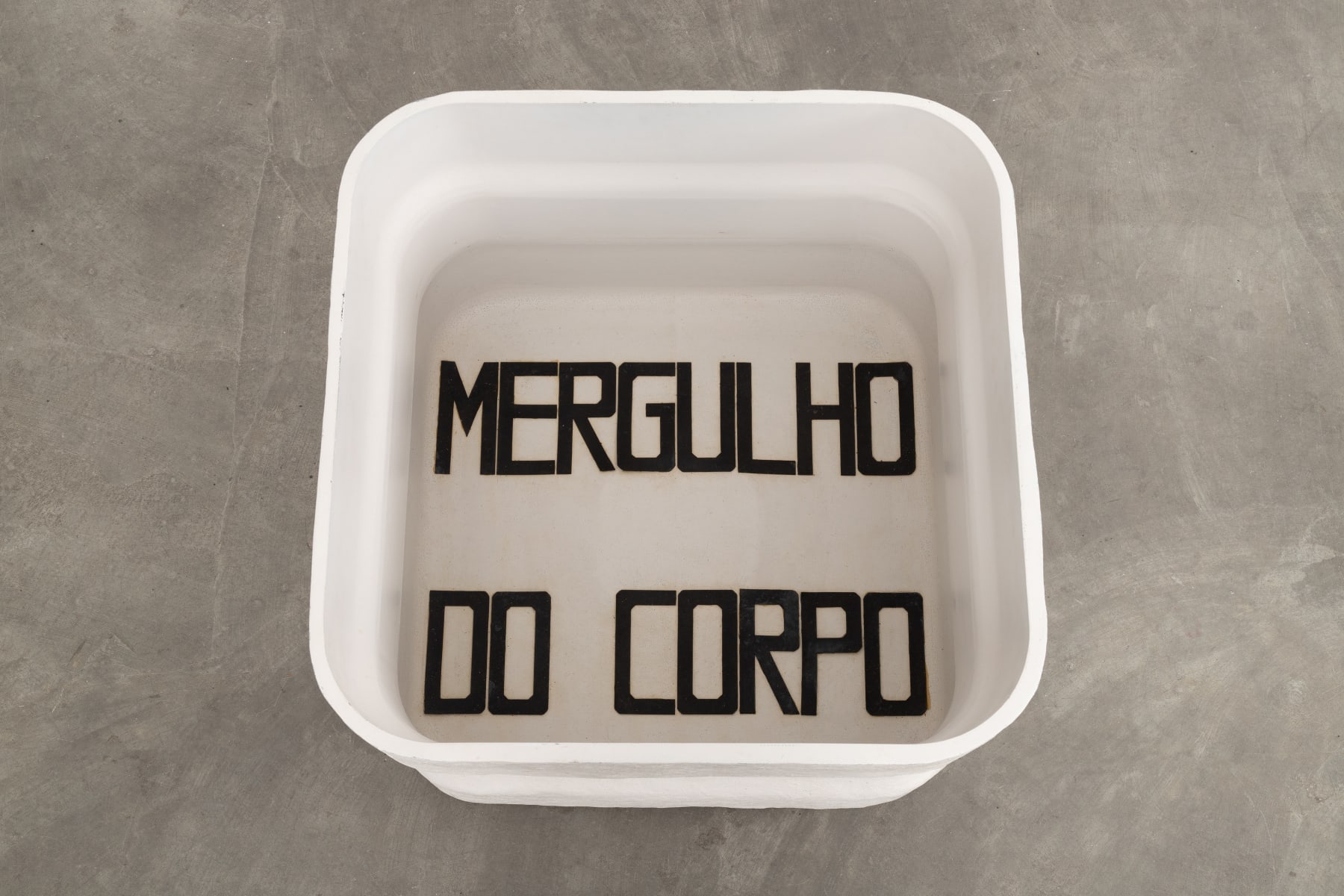Hélio Oiticica
B47 Bólide Caixa 22, 1967
caixa d’água com inscrição de letras de borracha preta
[water tank with inscription in black rubber letters]
[water tank with inscription in black rubber letters]
47.5 x 55 x 55 cm
[18 3/4 x 21 5/8 x 21 5/8 in]
[18 3/4 x 21 5/8 x 21 5/8 in]
Copyright The Artist
Further images
Em 1963, Hélio Oiticica iniciou a produção dos Bólides. São trabalhos em formato de caixa, majoritariamente em madeira ou vidro, mas também em plástico, contendo diferentes materiais como pigmento, terra,...
Em 1963, Hélio Oiticica iniciou a produção dos Bólides. São trabalhos em formato de caixa, majoritariamente em madeira ou vidro, mas também em plástico, contendo diferentes materiais como pigmento, terra, água, espelhos, conchas, pedaços de tecido ou papel, fotografias ou poemas. Às vezes se parecem com composições construtivas tridimensionais improvisadas, mas o espectador-participador é convidado a explorar as diferentes possibilidades desses objetos com outros sentidos: abrindo gavetas ou portas, manipulando materiais, sentindo odores, contemplando suas cores. Os Bólides trocam a escala corporal dos Penetráveis por uma escala menor, sugerindo a possibilidade de segurar a obra nas mãos.
In 1963, Hélio Oiticica started producing the Bólides. They are box-shaped works, mostly in wood or glass, but also in plastic, containing different materials such as pigment, earth, water, mirrors, shells, pieces of fabric or paper, photographs or poems. Sometimes they look like improvised three-dimensional constructive compositions, but the spectator-participant is invited to explore the different possibilities of these objects with other senses: opening drawers or doors, manipulating materials, feeling odors, contemplating their colors. The Bólides exchange the corporeal scale of the Penetrables for a smaller scale, suggesting the possibility of holding the work in one's hands.
In 1963, Hélio Oiticica started producing the Bólides. They are box-shaped works, mostly in wood or glass, but also in plastic, containing different materials such as pigment, earth, water, mirrors, shells, pieces of fabric or paper, photographs or poems. Sometimes they look like improvised three-dimensional constructive compositions, but the spectator-participant is invited to explore the different possibilities of these objects with other senses: opening drawers or doors, manipulating materials, feeling odors, contemplating their colors. The Bólides exchange the corporeal scale of the Penetrables for a smaller scale, suggesting the possibility of holding the work in one's hands.





